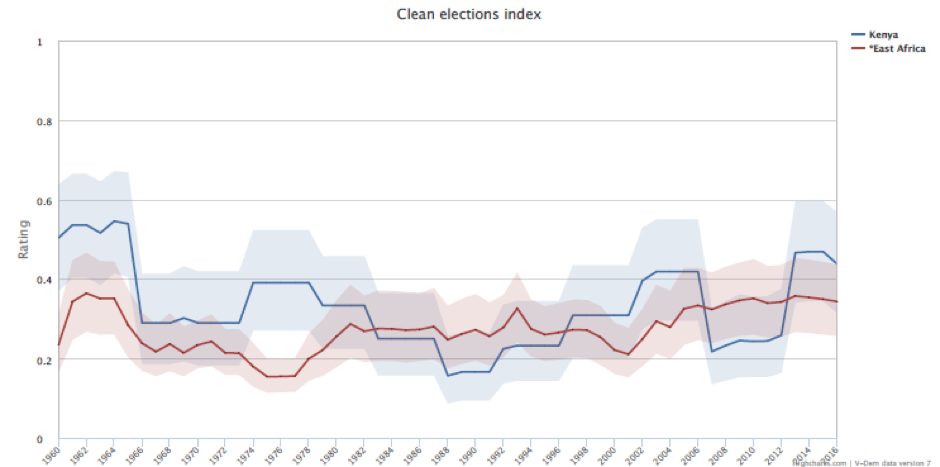Elections in Kenya
By: V-Dem Staff
Sep 05, 2017
Graph of the week is back!
Let us follow up on some of the elections that took place during summer. On August 8, elections were held in Kenya to both chambers of the bicameral legislature and in the presidential incumbent president Uhuru Kenyatta got a majority of the votes. However, the elections did not take place without obstacles. Before the elections, the election official in charge of Kenya’s computerized voting system was found dead. In addition, violent protests occurred during the elections and the results were on September 2 nullified by Kenya’s Supreme Court. New elections will be held within 60 days.
Irregular developments like these during elections are taking into account in V-Dem’s Clean Elections Index. This week’s graph will look at the development of the V-Dem Clean Elections Index in Kenya since independence compared to the average between countries in East African region. Building on several V-Dem indicators the Clean Elections Index takes into account the absence of registration fraud, systematic irregularities, government intimidation of the opposition, vote buying, as well as violence during the elections. The higher the value on the index, the cleaner are elections. At the time of Kenya’s first elections in 1966 after independence, the index drops. Since then it has taken an irregular path and a similar development can be seen for the East African average. However, in recent year Kenya seem to have taken a development towards cleaner elections.
To find out more about the democratic development in Kenya, or any other country in the world, use our online analysis tools at v-dem.net.


